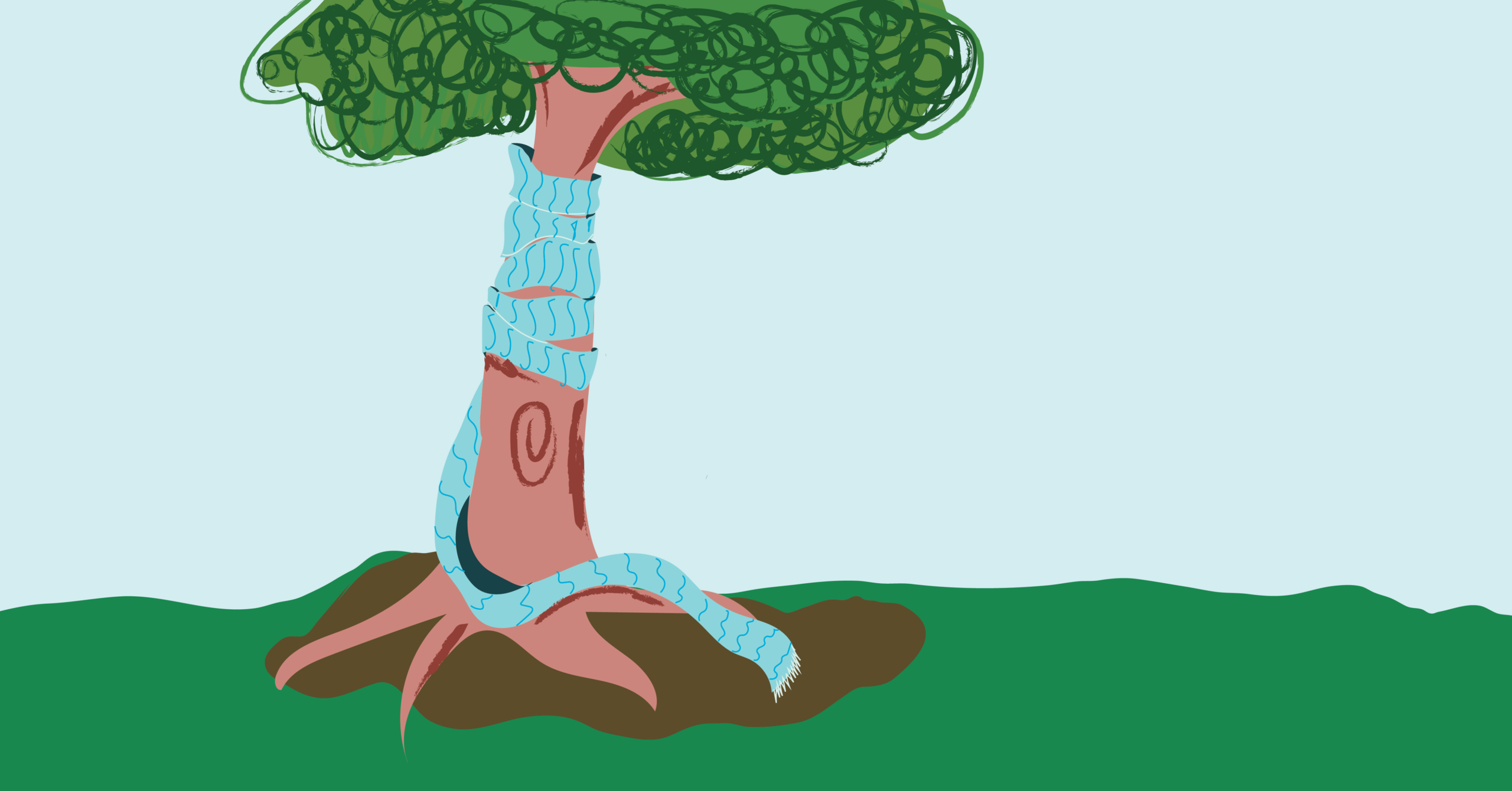Count it all: fibre arts and feminism
From “craftivism” to “yarn-bombing,” fibre arts are weaved into activism.
For me, being able to create something that a machine cannot was perhaps the most appealing aspect of crochet when I first got into it. With robots and technology taking over pretty much everything, it was comforting to know there was something only a person could do. But crochet is more than a hobby for me. It represents a connection to the past when crochet and fibre arts were solely women’s work. When I crochet, I’m transported away from social media and the 21st century to stillness. The motion of each stitch soothes me, and I feel like I’m out somewhere in a meadow.
Traditionally associated with women and the household, fibre arts are oftentimes brushed aside as an “old ladies’ hobby.” Yet, we’ve seen the power of “yarn-bombing” and crochet graffiti in raising awareness of social justice issues. Fibre arts are more than just a means to make clothing or a pastime. Women have long embraced the femininity of fibre arts and used it as a means of activism, or “craftivism”—the act of protesting with art. This form of colourful protest draws attention to its creator, prompting viewers to ask themselves, “Who made this?” and “How long did it take?” and “Why is it here?” It is precisely this aspect that I find so endearing about fibre art in public spaces. Think about how much a hand-knitted scarf costs on Etsy, or how long it took your aunt to crochet a headband for you. Now think about all that time someone dedicated to a cause they felt was so worthwhile that they gifted a piece of themselves—their time, design, and energy—to the public.
Perhaps one can argue that fibre art protests, aside from being a lively art installation, are a waste of materials. Sure, that yarn could be used to make clothing. But would we still pay attention to protests if they didn’t make us feel something? The whole point of activism is to stir what’s been stiffened inside us. I can’t help but applaud the first person who took yarn to the streets. With 92 million tonnes of textiles ending up in landfills every year, a colourful yarn-wrapped tree being wasteful shouldn’t be the excuse we use to bypass important causes that people have dedicated their time to supporting nor dissuade us from taking in the powerful impact of yarn-bombing in public spaces.
In queer and marginalized spaces, crochet and yarn art has also been embraced by the community. For many queer and feminist communities, fibre arts that are traditionally perceived as women’s work “are being re-imagined, not as a return to a conservative past, but rather as a break from that past.” Perhaps there’s something enticing about defying gender stereotypes and pushing the societal boundaries around traditionally deemed “ladies’ jobs.” Giant crochet penises and vulvas for sale at art markets have become statement art pieces for people to celebrate their sexuality and authenticity.
The popularity of crocheted items, thanks to social media, has unfortunately fallen into the grasp of fast fashion. Because each crochet item is handmade, fast fashion brands that sell crocheted tops and accessories are inevitably exploiting a worker’s craft. You can rest assured that these companies are not properly compensating the workers for their work, and that’s a downside to the rise in fibre art popularity. Not only is this a capitalist nightmare for crocheters and designers, but it also undermines the value and time needed to craft a quality piece. Fast fashion companies that sell cheap crochet pieces also directly affect the impact of crochet graffiti or craftivism protests because when people are oblivious to the time and effort it takes to create handmade yarn pieces, then they will also fail to realize and appreciate the significance behind the fibre arts.
So, what can you do? For one thing, if you feel compelled to stand up to conservative gender stereotypes, you can learn to crochet. Take in how you can choose to learn—something not afforded to everyone. It’s something that feminism must still challenge.
Craftivism is unlikely to go away anytime soon. If anything, I think yarn-bombing is here to stay. So, when you come across yarn-bombing, appreciate it. It is a loud statement, not only to the creativity among us but also the dedication we have to causes we find meaningful.
Arts & Entertainment Editor (Volume 50); Staff Writer (Volume 49) — Hannah is in her final year double majoring in Communications, Culture, Information and Technology (CCIT) and Professional Writing and Communications (PWC). In her spare time, Hannah runs her sticker shop The Aesthetics Studio and listens to podcasts while drawing. Hannah’s previous publications include PWC’s official journal of creative non-fiction in Mindwaves Vol. 15 and research in Compass Vol. 9 and 10. She also served as an Associate Editor for Compass Vol. 9 and Vol. 10. Hannah was a Staff Writer for The Medium Vol. 49 and 50 before becoming the A&E Editor. You can connect with Hannah on LinkedIn.


